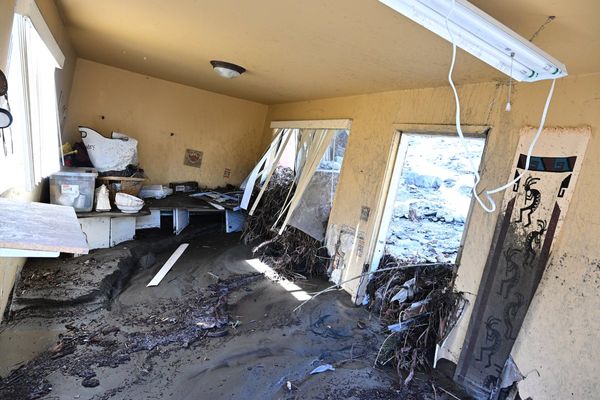
I’m a patron of a small local charity that helps struggling children to rebuild trust and connection. It’s called Sirona Therapeutic Horsemanship, and it works by bringing them together with rescued horses. The horses, like many of the children, arrive traumatised, anxious and frightened. They help each other to heal. Children who have lost their trust in humans can find it in horses, which neither threaten nor judge them, then build on that relationship gradually to reconnect with people.
It’s an astonishing, inspiring thing to witness, as the children begin to calm, uncurl and find purpose and hope. It can have life-changing results. But, though I can in no way speak on Sirona’s behalf, I’m painfully aware that such charities can help only a tiny fraction of the children in desperate need of stable relationships, trust and love.
Some of the children who come to Sirona are in care, a sector that has now become a business. Children’s residential care, foster care and special schools have steadily been taken over – with the blessing of successive governments – by profit-making companies. Private agencies now own 36% of the fostering sector in England, while profit-making corporations own 83% of children’s residential care. “Blocks of provision” – which means numbers of children – are traded from one company to another. How much is a human being worth? The value of a child on the books, as the dedicated journalist Martin Barrow documents, is £100,000.
So this is what I have learned. That nothing is now sacred. Nothing is too valued, too important, too vulnerable to not be hacked and stacked and used as fuel on capitalism’s bonfire. Inured as we are to the scorching of all we hold dear, turning children into commodities from which commercial ventures can extract profit stretches the boundaries of belief. Can it be true? Is this really how the system operates? Yes and yes.
Children in residential care, on average, generate £910 each of profit a week for the corporations that control them. Large commercial providers of children’s residential care make average profits of 19%, according to a report commissioned by the Local Government Association – an astonishing rate of return. Ordinary businesses do well to make 5%.
Who are these lucky companies? An Observer investigation found many of them are private equity, venture capital and sovereign wealth funds. Among the owners are the state of Qatar and the emirate of Abu Dhabi, whose care company in the UK, mostly investing in special schools, made 26.5% profits in 2022. Our government believes it is unacceptable for the Telegraph newspaper to be bought by the United Arab Emirates but acceptable for essential public services to be owned for profit by this cluster of dictatorships.
Some of the providers are highly opaque, registered in overseas secrecy regimes, and largely inscrutable to those who might wish to discover whether their businesses are sustainable. In some cases, their business model looks like that of the privatised water companies: loading themselves with debt, sucking out profits and dividends, dumping risk, and creating what could be a highly unstable system. In some cases, their ability to service these debts relies on their enormous rates of profit. Were these to falter, they would collapse. Because a few large companies now dominate the sector, if one of them fails the effect could be catastrophic for thousands of their “transferable assets”, known to you and me as children in care.
Who pays for these profits? Superficially, our local authorities – which, of course, means all of us. This month, two Northamptonshire councils revealed they are paying an average of £281,000 a year for each residential placement, or £5,400 a week. A direct comparison cannot be made, because many children in care have complex needs, but just by way of reference Eton’s eye-watering fees are £46,000 a year. This exacerbates the impacts of austerity: a combination of massive cuts to council budgets, the rising number of children in care and the stupendous profits being made by private operators are driving many local authorities to the verge of bankruptcy.
But those who pay the highest price are, of course, the children (alongside residential staff and foster carers, who are often ruthlessly exploited). The residential care business works in many cases like this: the companies rent, buy or build houses where land and property is cheapest, then offer slots to local authorities. Children are sometimes moved hundreds of miles, to where the cheap accommodation has been provided, breaking their bonds with siblings, friends, teachers, carers, therapists, courses and anything else familiar. Children in south Devon are being sent to Liverpool and Yorkshire, 300 miles away.
There are extreme cases, such as that of the 12-year-old “placed” (dumped would seem more appropriate) in a caravan on a campsite. Others have been “placed” in tents. Some private providers, once children enter residential care, offer a good service. But the model itself, which routinely rips children from their roots, severing belonging and trust, can nonetheless be devastating to their wellbeing. When children working with Sirona are suddenly moved out of the region to a residential home at the other end of the country, the engagement and trust the charity had begun to develop are snapped, and they are once more cut adrift.
The system is in crisis, but crisis is lucrative. The independent review of children’s social care, commissioned by the government after repeated requests from local authorities and published in 2022, makes the crucial point that private providers can “refuse to engage” with attempts to rationalise the system, as they have no incentive to see it reformed. Perpetual chaos means they have councils over a barrel. Systemic dysfunction forces local authorities to make expensive last-minute “spot purchases” of residential care, rather than, for example, building regional care cooperatives, which would forecast and absorb demand, investing in public or not-for-profit provision and enabling children to stay close to home. For this and many other reasons, the review concluded that “providing care for children should not be based on profit”. But the government won’t listen.
How could we have reached this point, in which the exchange of children for profit has been normalised and generalised? Well, by following the dominant, poisonous ideology of our times – neoliberalism – to its logical conclusion: that everything, regardless of inherent value, can be bought and sold.
George Monbiot is a Guardian columnist







